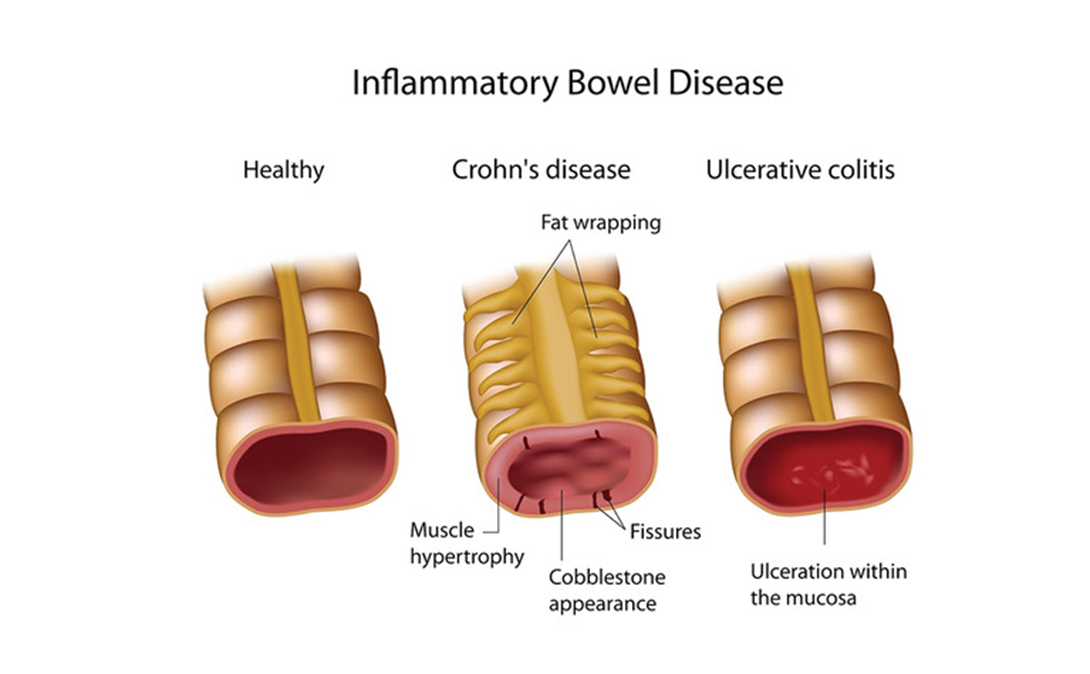A client is hospitalized with an inflammatory bowel disease (IBD) exacerbation and is being treated with a corticosteroid. The client develops a rigid abdomen with rebound tenderness. Which action should the nurse take?
Measure capillary glucose level.
Encourage ambulation in the room.
Monitor for bloody diarrheal stools.
Obtain vital sign measurements.
The Correct Answer is D
Choice A reason: Measuring capillary glucose level is not a priority action for a client with a rigid abdomen and rebound tenderness. These signs indicate peritonitis, which is a serious complication of IBD that requires immediate attention. Corticosteroids can increase blood glucose levels, but this is not an urgent concern in this situation.
Choice B reason: Encouraging ambulation in the room is not appropriate for a client with a rigid abdomen and rebound tenderness. These signs indicate peritonitis, which is a serious complication of IBD that requires immediate attention. Ambulation can worsen the pain and inflammation, and increase the risk of bowel perforation.
Choice C reason: Monitoring for bloody diarrheal stools is important for a client with IBD, but not a priority action for a client with a rigid abdomen and rebound tenderness. These signs indicate peritonitis, which is a serious complication of IBD that requires immediate attention. Bloody stools can be a sign of ulceration or bleeding in the bowel, but they are not specific to peritonitis.
Choice D reason: Obtaining vital sign measurements is the priority action for a client with a rigid abdomen and rebound tenderness. These signs indicate peritonitis, which is a serious complication of IBD that requires immediate attention. Vital signs can reveal signs of infection, inflammation, shock, and organ failure, which can guide the appropriate interventions and treatments.

Nursing Test Bank
Naxlex Comprehensive Predictor Exams
Related Questions
Correct Answer is {"A":{"answers":"B"},"B":{"answers":"A"},"C":{"answers":"A"},"D":{"answers":"A"},"E":{"answers":"B"},"F":{"answers":"A"}}
Explanation
Choice A reason: Place the client in a room near the elevator: This does **not** promote client safety, because it exposes the client to more noise and disturbance, which can increase stress and blood pressure. A quiet and calm environment is preferable for stroke clients.
Choice B reason: Complete a swallow study before giving anything by mouth: This **promotes** client safety, because it assesses the client's ability to swallow and prevent aspiration. Stroke clients may have impaired swallowing due to facial weakness or sensory loss.
Choice C reason: Provide a call button kept within reach: This **promotes** client safety, because it allows the client to communicate their needs and request assistance when needed. Stroke clients may have limited mobility or vision, which can increase their risk of falls or injuries.
Choice D reason: Initiate use of the bed alarm: This **promotes** client safety, because it alerts the staff if the client tries to get out of bed without assistance. Stroke clients may have impaired judgment or balance, which can lead to falls or accidents.
Choice E reason: Place client belongings out of reach: This does **not** promote client safety, because it makes the client feel frustrated and helpless. Stroke clients may have difficulty reaching for their belongings due to hemiparesis or hemiplegia, which can affect their self-care and independence. The nurse should place the client's belongings within reach on their unaffected side and encourage them to use them as much as possible.
Choice F reason: Instruct the client to call before getting up: This **promotes** client safety, because it ensures that the client has adequate support and supervision when getting up. Stroke clients may have orthostatic hypotension, which can cause dizziness or fainting when changing positions. The nurse should assist the client to get up slowly and monitor their vital signs.
Correct Answer is D
Explanation
Choice A reason: Canned vegetables with additional table salt are not a good choice for someone with cholecystitis, because they are high in sodium, which can increase fluid retention and inflammation. However, this choice is not eliminated by the client, so it does not indicate successful teaching.
Choice B reason: Pasta with herbal butter and no meat sauce is a good choice for someone with cholecystitis, because it is low in fat and protein, which can trigger gallbladder contractions and pain. This choice is not eliminated by the client, so it does not indicate successful teaching.
Choice C reason: Citrus fruit and melon with a salt substitute are also good choices for someone with cholecystitis, because they are high in vitamin C and water, which can help dissolve gallstones and prevent infection. This choice is not eliminated by the client, so it does not indicate successful teaching.
Choice D reason: Whole milk and daily servings of ice cream are bad choices for someone with cholecystitis, because they are high in fat and cholesterol, which can worsen gallbladder inflammation and increase the risk of gallstone formation. This choice is eliminated by the client, so it indicates successful teaching.
Whether you are a student looking to ace your exams or a practicing nurse seeking to enhance your expertise , our nursing education contents will empower you with the confidence and competence to make a difference in the lives of patients and become a respected leader in the healthcare field.
Visit Naxlex, invest in your future and unlock endless possibilities with our unparalleled nursing education contents today
Report Wrong Answer on the Current Question
Do you disagree with the answer? If yes, what is your expected answer? Explain.
Kindly be descriptive with the issue you are facing.
